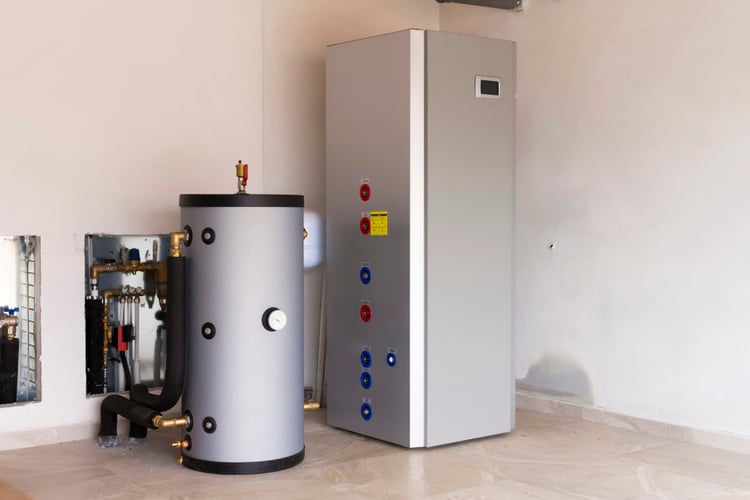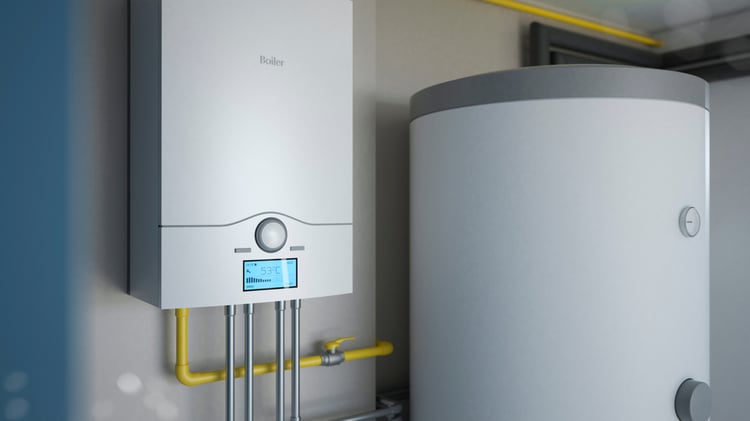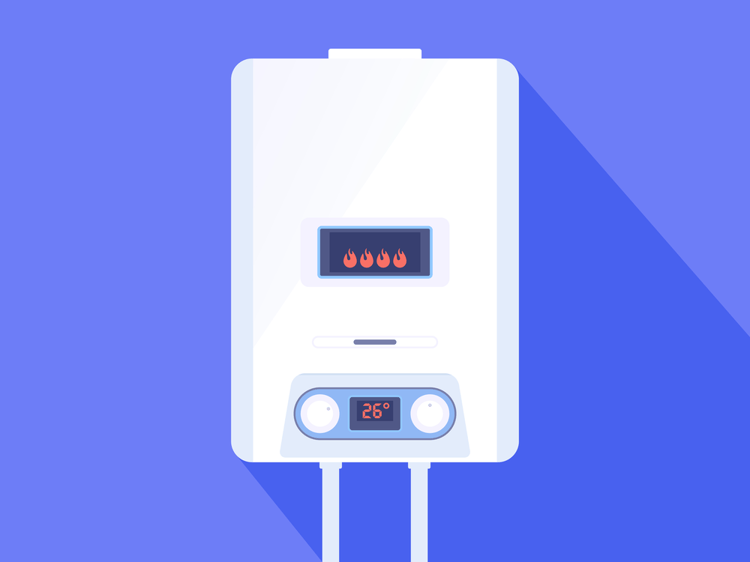Comparing the Energy Costs and Emissions of 3 Water Heater Types

When MEP engineers design plumbing systems for buildings, they have many hot water options to choose from - each with advantages and disadvantages. However, if you’re looking for water heaters with the ENERGY STAR label, three main types are available:
- Electric heat pump with storage
- Gas-fired heater with storage
- Tankless gas heater
These three options are cost-effective, and they use energy inputs that are available as utility services. On the other hand, building owners who use #2 or #4 fuel oil for water heating must schedule regular deliveries by truck.
In this article, we will compare the three types of water heaters based on emissions and operating costs. The comparison is based on a heating output of 100 therms, with the emission factors provided by Local Law 97 of 2019, and typical electricity and gas prices for NYC.
Electric Heat Pump with Storage Tank

Electric heat pumps with a capacity of more than 55 gallons must have an energy factor of 2.20 or higher to qualify for ENERGY STAR labeling. To deliver 100 therms of heating with an EF of 2.20, this heat pump must consume the electrical equivalent of 45.45 therms - 1,332 kWh.
- Local Law 97 provides an emissions factor of 0.000288962 tCO2-e per kWh, which applies when using electricity from the grid.
- A commercial electricity price of 20 cents/kWh is typical in NYC.
In this case, the heat pump would have accumulated an energy cost of $266 after providing 100 therms of heat, while producing emissions of 385 kg CO2-eq. However, since the heat pump runs with electric power, both the emissions and operating costs can be reduced with clean generation - onsite solar power is an option.
Under LL97, the 385 kg of emissions would add $103 in penalties ($268 per metric ton), reaching a total cost of $369. However, these costs can be reduced by using solar power:
- Assume that half of the electricity comes from a solar PV system, considering a cost of $0.08 / kWh due to financing, operation and maintenance.
- The energy cost would drop to $186, and the emissions would drop by half, decreasing the penalty to $52. The total cost is now $238.
Gas-Fired Heater with Storage Tank

When using a storage gas heater with a capacity of over 55 gallons, the minimum EF for an ENERGY STAR label is 0.77. To deliver 100 therms of water heating, the unit would consume 129.87 therms of natural gas.
- Local Law 97 provides an emissions factor of 0.00005311 tCO2-e per kWh.
- A natural gas price of $1.20 per therm is typical in NYC.
In this case, we obtain an energy cost of $156 and emissions of 690 kg CO2-eq. While the operating cost is lower compared with an electric heat pump that operates fully with the grid, the emissions are higher by almost 80%.
In this case, the 690 kg of emissions add $185 to the building’s LL97 penalty, and the total cost is $341. The electric heat pump has a higher cost when using 100% grid electricity ($369), but this can be reduced with solar power. This flexibility to switch energy inputs is not available when using gas-fired water heaters.
Tankless Gas Heater

All tankless gas heaters must have an EF of at least 0.90 to qualify for ENERGY STAR. To deliver 100 therms of water heating, this unit would consume 111.11 therms. Since the fuel is natural gas like in the previous calculation, the same emissions factor and energy cost are used.
For an energy input of 111.11 therms, we obtain a cost of $133 and emissions of 590 kg CO2-eq. The Local Law 97 penalty associated with these emissions is $158, and the total cost is $291. Since the tankless heater has a higher EF than the storage heater, both energy costs and emissions are reduced (0.77 EF vs 0.90 EF). However, a tankless gas heater is also limited by not being able to switch its energy input with ease.
Comparison Summary
The following table summarizes the energy inputs, energy costs, emissions and LL97 penalties for the three heater types - electric heat pump, storage gas heater, and tankless gas heater.
|
Water Heater Type |
Energy Consumed |
Energy Cost |
Emissions (kg CO2-eq) |
Emissions Penalty |
Total Cost |
|
Heat Pump |
1332 kWh |
$266 |
385 kg |
$103 |
$369 |
|
Heat Pump with 50% Solar PV |
1332 kWh |
$186 |
192 kg |
$52 |
$238 |
|
Storage Gas |
129.87 therm |
$156 |
690 kg |
$185 |
$341 |
|
Tankless Gas |
111.11 therm |
$133 |
590 kg |
$158 |
$291 |
This is a very simplified example, but it demonstrates how the choice of water heater and its energy input can affect operating costs and emissions. To estimate these values accurately for a building, you can get a professional MEP design and energy modeling service.

Michael Tobias
Michael Tobias, the Founding Principal of NY Engineers, currently leads a team of 150+ MEP/FP engineers and has led over 4,000 projects in the US
Join 15,000+ Fellow Architects and Contractors
Get expert engineering tips straight to your inbox. Subscribe to the NY Engineers Blog below.
